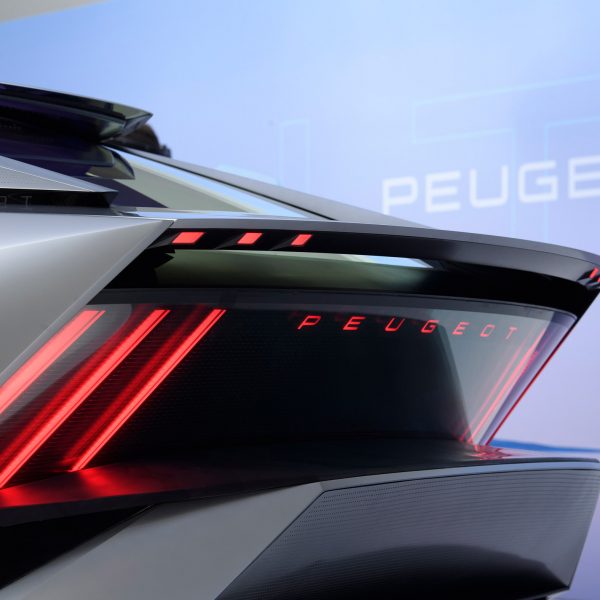The “global automotive footprint in big cities” could be reduced thanks to advances in car technology, Peugeot’s Philippe-Emmanuel Jean told Dezeen at the European unveiling of the brand’s Inception Concept EV.
Swapping the conventional internal combustion engine (ICE) for batteries, which are shrinking in size, means carmakers will be able to produce spacious interiors in smaller vehicles, Peugeot’s head of concept cars and brand planning said .
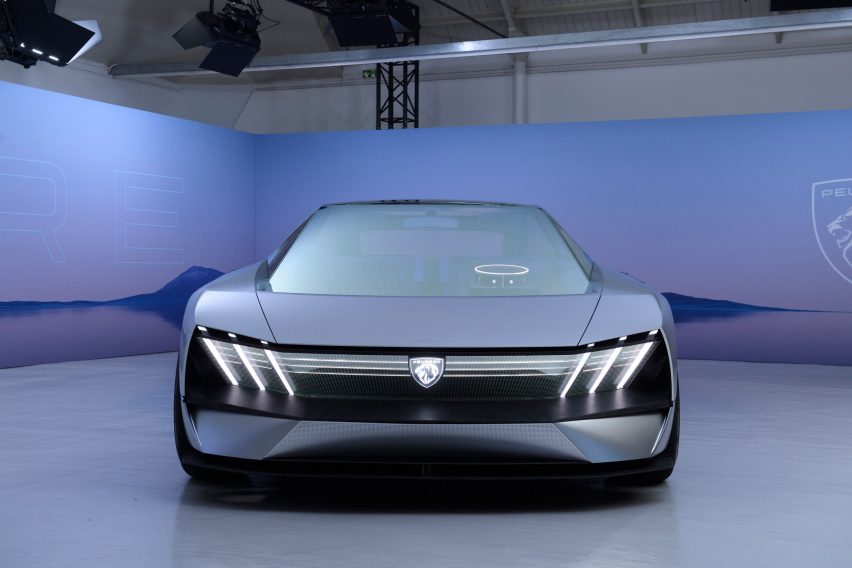
“The footprint of ICE cars is not as good because the engine takes up a lot of space, so you end up with a big footprint and space for people that isn’t that big,” Jean said.
“For electric platforms the footprint is much better because in the same space you can have a bigger space for people – that’s what helps us create that lounge effect that we want in our cars,” he added.
“Especially at the front of the car you free up more space, and that’s great for people, but also for the footprint, because in a compact car you can have a people space that’s as big as maybe a bigger space . car when you look at ICE cars.”
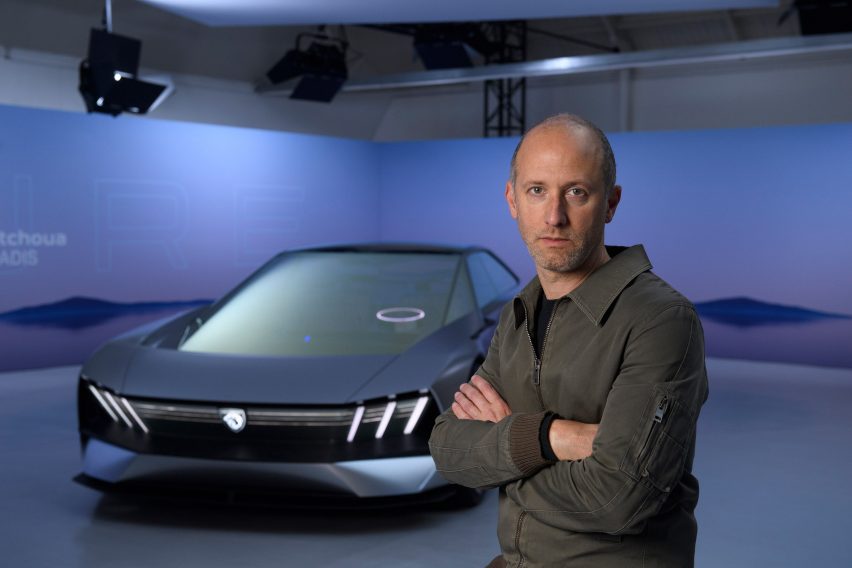
Asked if this could lead to family cars becoming smaller, Jean replied: “Definitely.”
“It’s also interesting for big cities because you can have more space in more compact cars, and in the end the overall automotive footprint in big cities is also less important, which, I think, is the direction that’s important for in the future,” he said.
Jean spoke to Dezeen at an event in Paris where European media got their first look at Peugeot’s new electric vehicle (EV) Inception Concept.
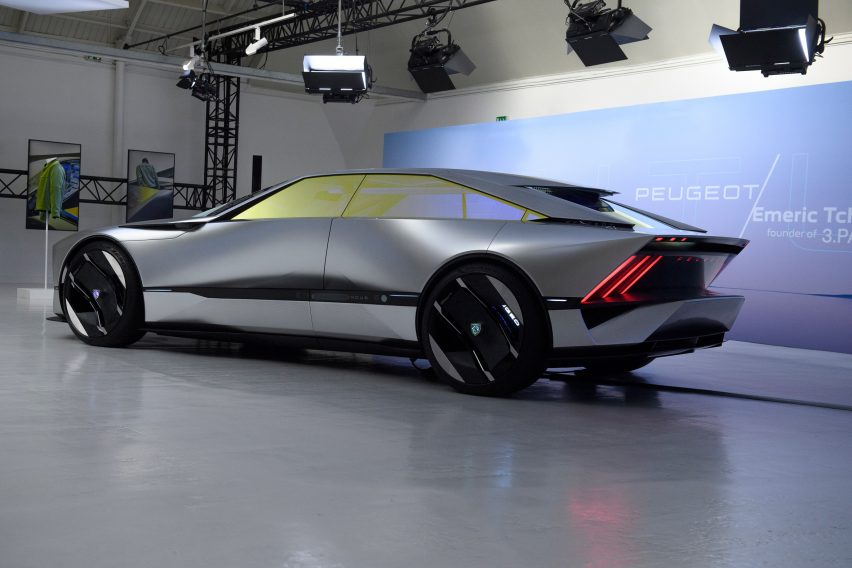
One of the concept car’s defining features is a wide windshield that extends down to a foot from the front, made possible by the battery sitting on the floor of the vehicle instead of under the hood.
Described by Jean as a design “manifesto”, the five-metre-long Inception concept has a dramatic, angular shape that was partly inspired by Brutalist architecture.
The concept vehicle is said to foreshadow the direction of Peugeot’s production cars from 2025 onwards, with the French manufacturer aiming to increase the market and put more emphasis on the “driving experience”.
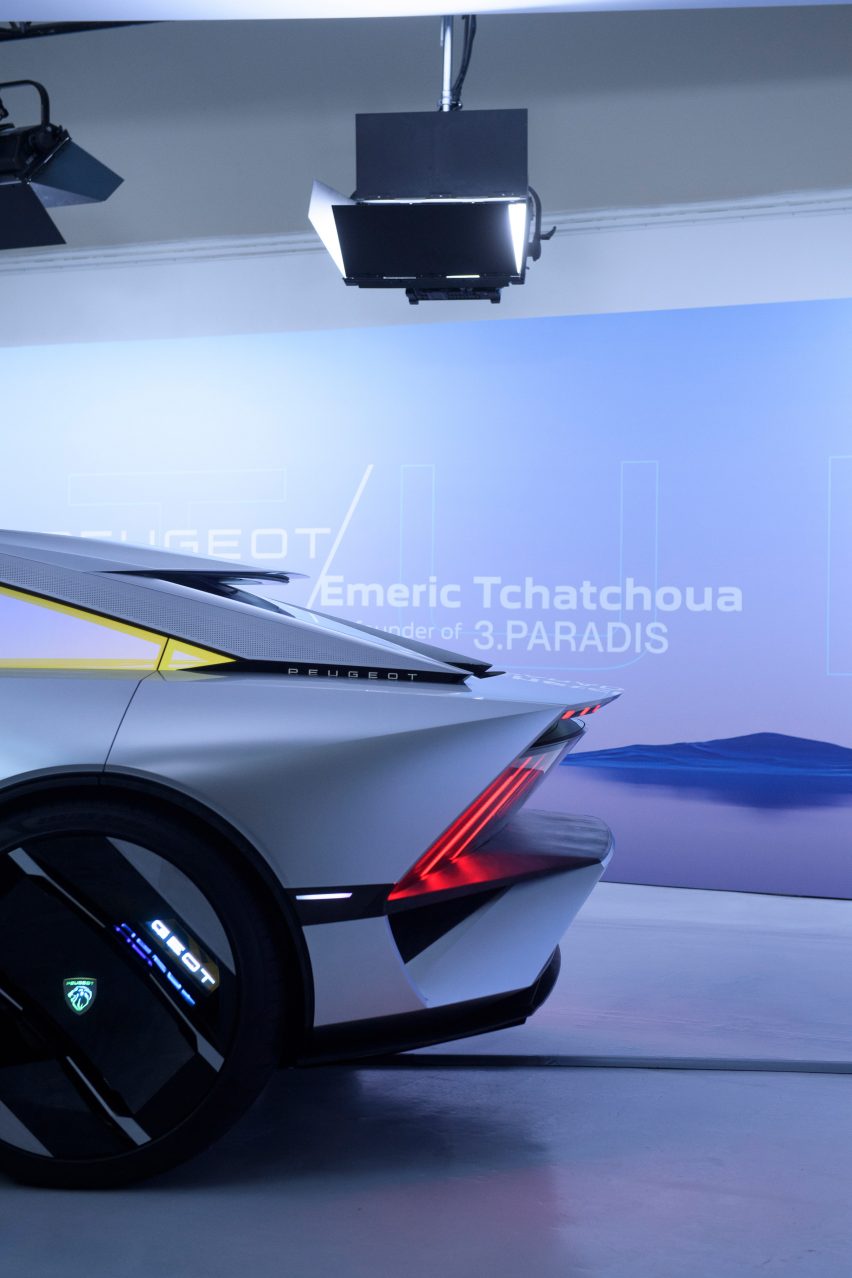
Among the features of the Concept Inception that Peugeot is expected to roll out more widely soon is the Hypersquare, which replaces the steering wheel.
This is part of Peugeot’s plan to introduce electronic steering – also known as steer-by-wire – by 2025, which will be more responsive than conventional analogue steering.
The Hypersquare, which was informed by video games, is a rectilinear device with circular holes in each of its corners that mimic the feel of a steering wheel and also includes a tablet-like touchscreen.
It replaces mechanical linkages with digital electrical controls and is controlled through movements similar to how we use a smartphone.
In a nod to self-driving technology, at the touch of a button, the Hypersquare and a cylindrical dashboard unit fold up to be replaced by a display that runs nearly the width of the car.
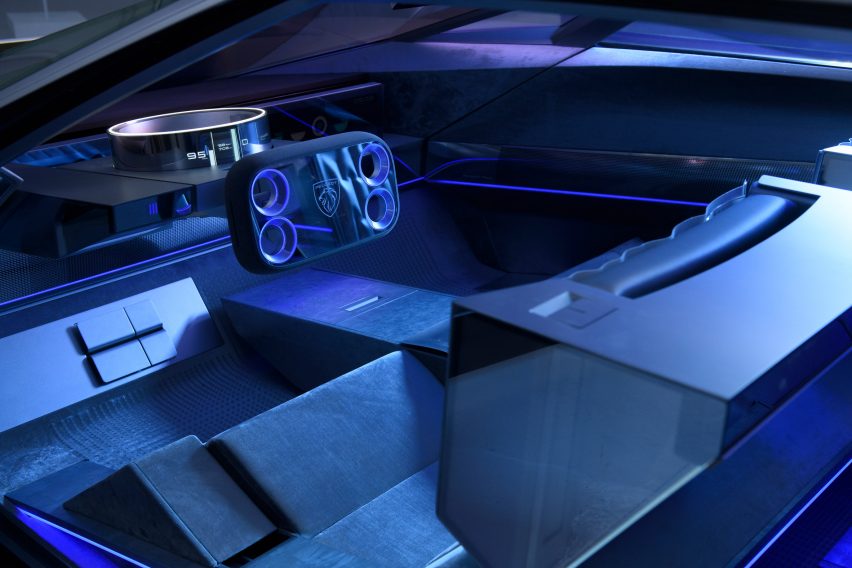
The car is dominated by a glass roof with Narema dichroic glass that reflects warmer colors on the outside, but bluer on the inside.
Peugeot’s design team followed the directions of the François-Mitterand Library and the Institut Français de la Mode in Paris when selecting the glass.
Other motifs expected to make it to mass-market Peugeot cars include chunky vents and triple-strip headlights with a starry sky effect panel.
The Inception Concept also has oversized wheels with tubeless tires, with color-changing branding that stays upright as the wheels spin.
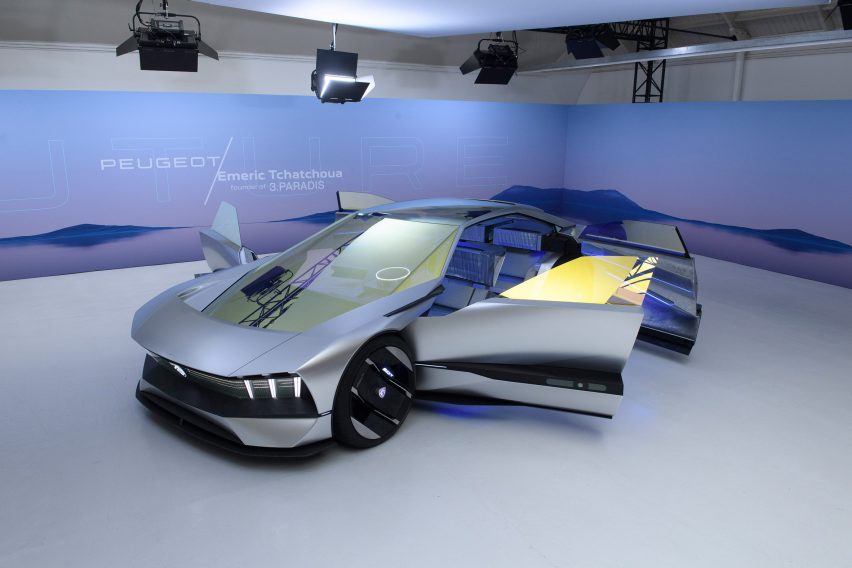
The wheel hubs are made from a carbon fiber-like material produced from leftover textile scraps in Peugeot’s design studio from a previous concept car project. The same material also forms the chassis.
It is one of several examples of experiments with materials used in the vehicle.
The matte finish uses less varnish than typical car paint, giving it a smaller carbon footprint while accentuating the shine of the glass.
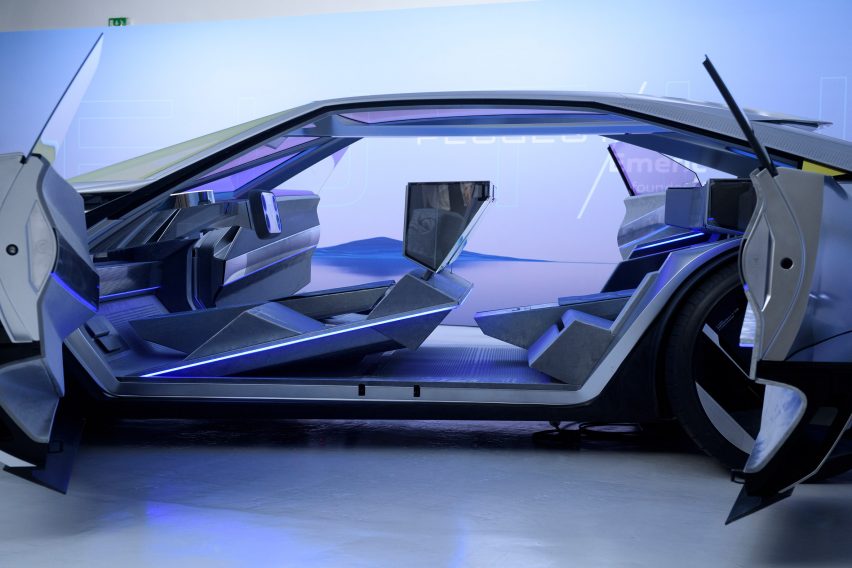
Inside, brushed steel is left exposed alongside matching silver velvet. The seats have been designed to leave parts of their materials exposed in a technique Peugeot calls “air quilting”, which it says helps with recycling.
The floor is made of 3D printed resin bumps placed over velvet. This same process was used by Emeric Tchatchoua of fashion label 3 Paradis to produce a Peugeot branded jacket that accompanied the launch of the Inception Concept.
The underbody parts are also 3D printed, producing a perforated effect.
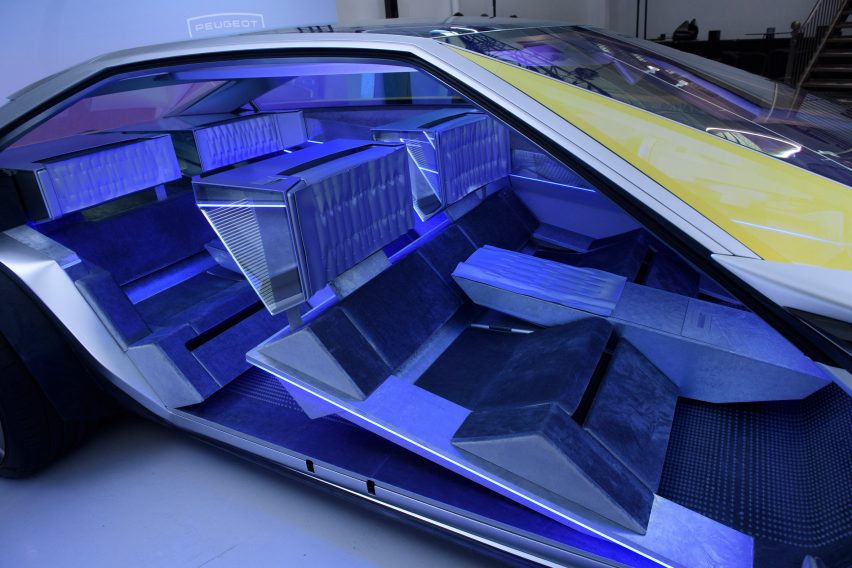
Many aspects of the Inception Concept’s design, such as the amount of glass in the front and the highly reclining seats, would not pass security checks.
But Jean said the two-year project had allowed Peugeot’s design team to try new things that wouldn’t have been possible otherwise.
“You have to think of a concept car as a laboratory for our designers,” he said.
“It’s really pushing the boundaries of creativity with a concept car, testing solutions in terms of design, in terms of technology, and at the same time adapting it to the next generation of production cars.”
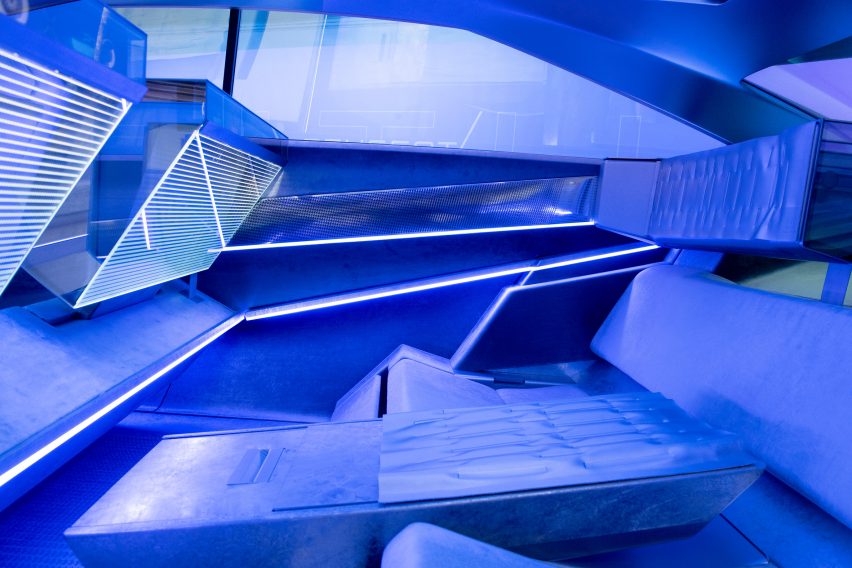
“So a concept car has a very important role to play in the future of Peugeot and yes, it’s a lot of time, it’s a lot of energy for the whole team, but it’s very important if you really want to push the boundaries and the design. attractive products for the future,” he added.
On the subject of the use of recycled materials in conventional cars, he indicated that the fully circular design is a long way off.
“The auto industry is a world of constraints, so it’s obviously a long process,” Jean said. “What we’re interested in is testing solutions with concept cars and then working with the engineers to bring the solutions to production, but of course that also takes a lot of time.”
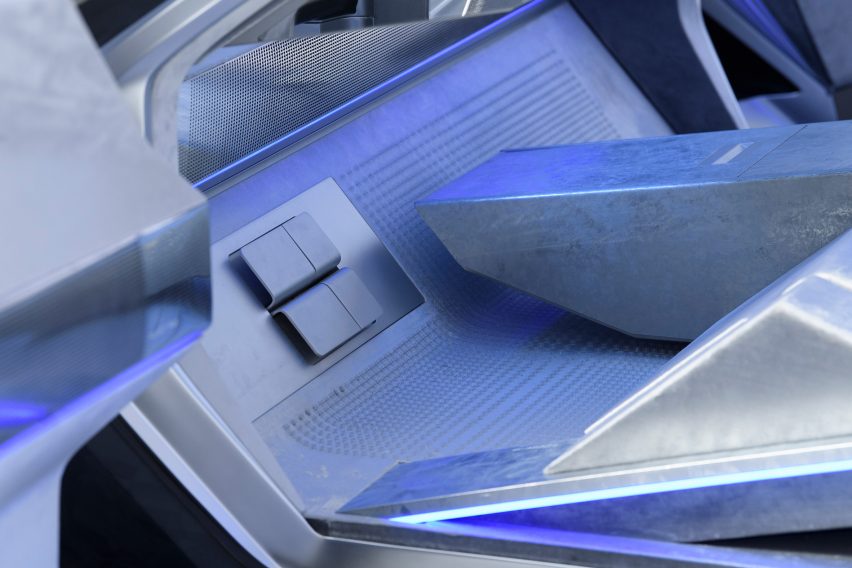
“But it’s definitely something that’s important to us,” he continued. “Today is a question of responsibility and it is clear that Peugeot wants to move forward for the future.”
Peugeot, part of the transnational car conglomerate Stellantis Group, has pledged to be carbon zero by 2038 and all its cars sold in Europe will be electric by 2030.
Other concept cars featured on Dezeen include the color-changing BMW i Vision Dee, the Polestar O2, which has a built-in drone, and Hyundai’s electrified remake of its 1980s Grandeur sedan.
Photo courtesy of Peugeot.


